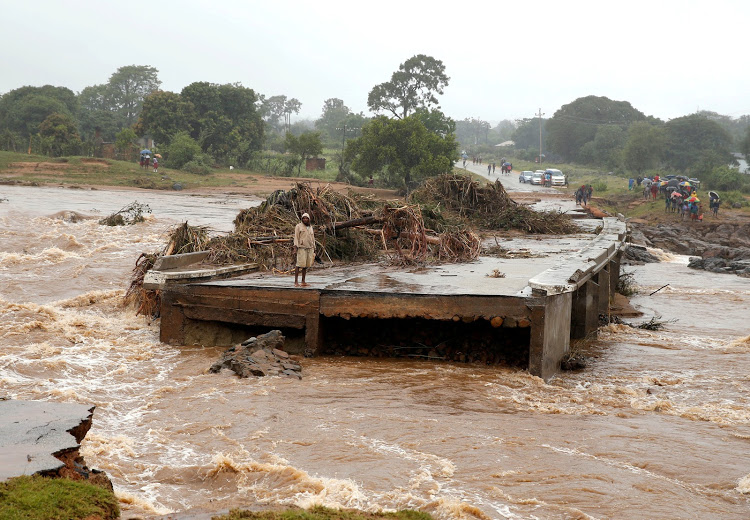
Cyclone Idai, which devastated Zimbabwe’s eastern border districts of Chimanimani and Chipinge in mid March after drowning Mozambique’s second largest city of Beira, has been described by the United Nations’ World Food Programme (WFP) Executive Director David Beasley as the biggest natural disaster to hit the region in living memory.
The cyclone is estimated to have affected nearly three million people in Mozambique, Zimbabwe and Malawi.
What do we know so far about Cyclone Idai’s impact on Zimbabwe?
Number of people killed
The Zimbabwe government’s official death toll figure stood at 268 on April 2, 2019.
Estimates of people killed and missing suggests the number could rise to 500, based on figures that the government is currently working with.
Number of people missing
At least 200 people are reported missing, with some believed to have been swept by flooded rivers to Mozambique, even into the Indian Ocean.
Zimbabwe Local Government, Public Works and National Housing Minister July Moyo said 82 Zimbabweans had been buried by Mozambicans in the neighbouring country, including 60 who were found in one place. (The Herald, April 3, 2019)
Identification of victims
The government has said a team of pathologists will help in the identification of some of deceased through DNA tests and will also facilitate visits to Mozambique by relatives of those buried there.
It said neighbourly Mozambicans marooned by the floods were forced to bury Zimbabwean Cyclone victims swept into their backyards because the bodies were increasingly getting into a bad state.
The question of exhumations and reburials would be considered later, according to the government.
Number of affected people
An estimated 100,000 people, mainly from around the epicentre of the cyclone’s devastation, Chimanimani and Chipinge, were affected.
Districts hit
Mainly mountainous Chimanimani and Chipinge on Zimbabwe’s eastern border with Mozambique.
The Cyclone also hit and destroyed homes and other infrastructure in several other areas, including Bikita, Gutu and Zaka in Masvingo province, Chikomba in Mashonaland East and Chirumhanzu in the Midlands.
Infrastructure destroyed
Houses, businesses, schools, clinics, churches, roads, bridges, boreholes and water wells, electricity and telecommunications infrastructure.
Farm animals, including cattle, goats, sheep and donkeys were swept away, and so were fields of crops and wood plantations.
Disaster management
The Zimbabwean government’s disaster response effort has been led by an Inter-Ministerial Committee on Civil Protection chaired by Local Government, Public Works and National Housing Minister July Moyo, and has included the army in rescue operations and delivering emergency food and medicines to affected areas.
Domestic response to the disaster
Shell-shocked Zimbabweans across the country — as individuals, organisations and corporates — reacted almost instantaneously to the devastation of Cyclone Idai with assistance of food, clothing, water, transport and offers to help in rescue operations.
Dozens of appeals and initiatives were launched immediately after the cyclone.
Foreign Assistance
The unprecedented scale of the disaster drew in assistance from abroad, from foreign governments and international organisations, including United Nations agencies specialising in humanitarian work.
Formal appeal for disaster relief assistance
On April 3, 2019, the Zimbabwean government announced that its Cabinet had approved the launch of a Formal Appeal for Domestic and International Disaster Relief Assistance which will contain details of the help it requires.
This would include assistance in the reconstruction of infrastructure and rehabilitation of a region that is home to about a tenth of the Zimbabwe’s population.
Do you want to use our content? Click Here











